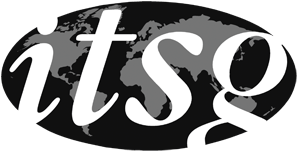Corporate Tax Guide: Russia
Members:
|
1. Country
The information is valid for the entire country except where indicated. For example, in the case of Malaysia, Labuan is part of Malaysia but has a special tax regime, so this is noted. |
Russian Federation | ||||||||||||||||||||
|
The corporate tax rate shown is the typical corporate tax rate that a domestic corporation owned by non-resident persons would pay. The tax rate does not include withholding tax on dividends, but does include a distribution tax shown separately if applicable. Certain countries have a low corporate tax rate, but charge an additional tax when a dividend is distributed. Because this tax is paid by the corporation, and not deducted from the amount of the dividend itself, it is not a dividend withholding tax. As a result, it typically cannot be reduced by an international tax treaty. |
20% (2% payable to the federal government and 18% payable to the regional governments). | ||||||||||||||||||||
|
The basis of taxation for a corporation will typically be one of:
|
Russian tax resident entities are taxed on worldwide income; foreign entities are taxed on income from commercial activities undertaken in Russia and on passive income from Russian sources. | ||||||||||||||||||||
|
Where non-resident corporation carries on business in a country, business profits may be subject to corporate tax. In addition, a branch profits tax may apply in lieu of dividend withholding tax. This branch profits tax applies to the after tax profits, typically at a fixed percentage. An international tax treaty may reduce the rate of branch profits tax, typically to the rate provided for dividend withholding. |
Yes, at regular rates. | ||||||||||||||||||||
|
The common forms of business entity are noted. In addition, the entities which are flow through entities for U.S. tax purposes are indicated. |
General Partnership, Limited Partnership, Public/Non-Public Joint Stock Company, Limited Liability Company. | ||||||||||||||||||||
|
Capital gains may be fully taxed, partially taxed or not at all. In certain countries, an exemption, called the participation exemption, will apply to exempt from tax a capital gain from disposition of a substantial holding of shares of a subsidiary. Where a participation exemption is applicable, it is noted together with a summary of the main conditions. |
Included in taxable income and taxed at regular rates. Participation exemptions:
| ||||||||||||||||||||
|
Certain countries allow group taxation, otherwise known as consolidated tax filing. Here the tax returns of a group of corporations in the country may be combined together, which can be useful. If group taxation is permitted, it is noted along with the main conditions. |
Yes. Russian companies forming a group with 90% (or more) direct or indirect ownership may file a consolidated tax return for the preceding calendar year if total tax payments exceeded RUB 10 billion and revenue and assets exceeded RUB 100 billion and RUB 300 billion, respectively, calculated according to Russian accounting standards. | ||||||||||||||||||||
|
Countries offer various kinds of special exemptions and incentives. Examples are a reduced tax rate, a tax holiday, a tax credit on the purchase of equipment, special accelerated deductions for deprecation, incentives for R&D, and various others. Here the major items are noted. |
| ||||||||||||||||||||
|
Many countries have thin capitalization rules which limit or deny the deduction of interest expense in certain circumstances. For example, if debt exceeds three times equity, a proportionate amount of interest expense may not be deductible. Limitations take various forms, restricting the interest expense deduction to a percentage of profit, deeming the debt to be equity and the interest to be a payment of dividends, and various other rules which may blend of these principles. Where a country has thin capitalization rules, they are briefly described. |
Yes. Thin capitalization rules apply where the lender is:
| ||||||||||||||||||||
|
Many countries have transfer pricing rules. They very often follow the OECD guidelines and the arms length principle. Some countries have specific rules which apply in certain cases. In addition, some countries allow for a selection of the most appropriate transfer pricing methodology in the circumstances, while other countries follow a hierarchy of methods, with the CUP method (comparable uncontrolled price) often ranking first. The transfer pricing rules are briefly explained. |
Yes. Five permitted transfer pricing methods: 1) Comparable uncontrolled price (primary method); 2) Resale-minus; 3) Cost-plus; 4) Comparable profitability; and 5) Profit-split. Aggressive enforcement requirement for records and documentation. Interest penalties and fines of 40% (20% for the period of 2014 through 2016) of underpaid tax apply if the price in the controlled transaction is proved to be outside a range of market prices. No fines apply if the transfer pricing adjustment relates to 2012 or 2013, or if the taxpayer submits transfer pricing documentation to the tax authorities within 30 days after the date on which the tax authorities request such documentation. | ||||||||||||||||||||
|
11. CFC Rules
Many countries tax passive income earned in controlled foreign corporations (CFC’s) on an imputation basis while active income is not taxed. Such CFC rules are usually complex and vary significantly in what is considered passive income, and how foreign tax paid is taken into account. Some countries approach CFC rules on the basis of whether or not the foreign corporation is resident in a low tax jurisdiction or a tax haven. This may be done through a black list of countries. The general overview of CFC rules is described in simple terms. |
Yes. Applies to controlled foreign affiliate (a company that is a tax resident in a foreign jurisdiction and that is controlled by Russian tax-resident individuals and companies). The undistributed profit of a CFC is included in the tax base of the controlling person in proportion to the person’s participation in the CFC, and is subject to taxation in Russia at a rate of 13% (for individuals) or at 20% (for legal entities) if the CFC’s profit exceeds 10 million rubles. The profit of the CFC that is taxable in Russia can be reduced by the amount of dividends or profit (in the case of entities without a legal personality) distributed by the CFC. | ||||||||||||||||||||
|
Profits repatriated by way of dividends from a subsidiary to a parent company are typically taxed in one of three ways:
|
No. | ||||||||||||||||||||
|
Most countries allow a foreign tax credit based on a formula, typically net foreign income over the net income times taxes payable. This limits the foreign tax credit to roughly the domestic tax otherwise applicable to the foreign income. There are numerous variations and technical rules in the details of foreign tax credit calculations. Where a foreign tax credit is allowed, the general principles are described. |
Yes. Foreign withholding taxes may be credited against Russian tax imposed on the same income, up to the amount of Russian tax on the income. | ||||||||||||||||||||
|
14. Losses
Losses typically can be carried forwards for a period of years, and sometimes can be carried back. Losses may be segregated into capital losses and non capital losses. |
Losses may be carry forward for 10 years (except for losses derived from activities subject to a 0% profit rate). The carry back of losses is not permitted. | ||||||||||||||||||||
|
It is not practical to list all of the tax treaties which a country has in a simple guide like this. Accordingly, a link is provided in each case to the tax treaties. Some countries have entered into Tax Information Exchange Agreements (TIEA). Treaties are more and more containing provisions that limit benefits (LOB provisions). |
Yes.
| ||||||||||||||||||||
|
Withholding tax rates vary considerably from treaty to treaty, and countries may have domestic exemptions applicable in certain circumstances (for example copyright royalties, interest paid to arm’s length persons, etc.). A table shows the typical rates but cannot adequately summarize all of the details. The applicable treaty should be consulted. |
| ||||||||||||||||||||
|
17. Taxation Year
Some countries allow for the selection of year-end while other countries specify a particular year-end which all business entities must have. Normally the taxation year cannot exceed 12 months. Where it can exceed 12 months, this is noted. |
Calendar year. | ||||||||||||||||||||
|
This is the due date for filing a tax return. Where extensions are available, this is noted. |
Due on 28 March following the end of the tax year. No extensions. | ||||||||||||||||||||
|
19. Tax Instalments
The typical tax instalment requirements are noted. |
Yes. Companies pay advance CIT payments on a monthly or quarterly basis. | ||||||||||||||||||||
|
20. Payment of Tax
This is the date when the corporate tax owing for the year must be paid. It may be different from the tax return filing due date. |
The final payment for the year is due by 28 March of the following year. | ||||||||||||||||||||
|
This is the period after which the tax department cannot in normal circumstances reassess a taxation year. It is sometimes referenced to the end of the taxation year and sometimes to the date of the first assessment of that taxation year. |
The statute of limitations is established for three years. | ||||||||||||||||||||
|
If a country has exchange controls, this is noted, together with the main requirements. |
No. | ||||||||||||||||||||
|
23. VAT
A VAT tax system typically provides that the supply of goods and services is classified as taxable, tax exempt, or zero rated. Where a business is engaged in an activity which is taxable, it must charge VAT on its revenue, and can claim a refund of VAT on its expenditures. Where the activity is exempt, it does not charge VAT on its revenue, and cannot claim back VAT paid. Where the entity is engaged in activities which are zero rated (typically agriculture, food services and exports), then it can claim back VAT which it has paid on its expenditures, and does not charge VAT on its revenue. If a country has a typical VAT system, this is noted. If a country has no VAT system but a sales tax system, this is indicated. Some countries may have a mixture, and taxes may apply at different levels (federal and state for example). |
Yes. Standard rate – 18%; exports of goods and certain services – 0%; certain food products and children’s goods – 10%. | ||||||||||||||||||||
|
Stamp duty, or land transfer tax, can apply on such things as the transfer of shares, land, or the issuance of bonds or debentures. This is described together with the applicable rates. |
Stamp duty is not applied, but similar duties may be levied on certain transactions and documents (state registration of: the issue of securities; rights to an enterprise as a property complex; contracts of alienation of immovable property, etc.). | ||||||||||||||||||||
|
25. Capital Tax
If capital tax is payable, this is described. Capital tax may apply in specialized industries, such as banking and insurance, even if a country does not generally apply a capital tax to corporations. |
Generally none. | ||||||||||||||||||||
|
26. Other Taxes
Where significant, other taxes are noted. |
Assets tax (2-2,2%,); Contributions to Social Insurance Fund (0-2,9%); Contributions to Pension Fund (10-22%); Contributions to Federal Medical Insurance (5,1%); Supplementary contributions for work place (0,2-8,5%); Income Tax withholding by employers (13-30%); and other. | ||||||||||||||||||||
|
Anti-Avoidance Rules take many forms, the most common ones are a general anti-avoidance rule, treaty shopping limitations, the requirement for economic substance (or a business purpose in carrying out transaction) and specific anti-avoidance rules for particular purposes. A very brief overview of the anti-avoidance rules is described. |
Russia does not currently have a GAAR. In practice, the Russian tax authorities and courts apply the concept of unjustified tax benefit. Treaty Shopping: No express rules. Economic Substance: No concept of this. | ||||||||||||||||||||
|
Where a non-resident person holds shares of a corporation established in the country listed, the capital gain which results may be taxable or not taxable depending on the circumstances and, possibly, the existences of an international tax treaty. The general rules are noted. |
Capital gains from the sale of shares are tax-exempt unless more than 50% of the assets of a Russian target company consist of immovable property located in Russia. Sale of Russian business assets is taxable. | ||||||||||||||||||||
|
Where a corporation is acquired through the purchase of shares, sometimes a step up is allowed so that the cost of its assets can be revalued. The main rules are briefly summarized. |
No step-ups are generally available (save for a few exceptions reflecting changes in the underlying assets, such as reconstruction, modernization, re-equipment or addition of equipment). | ||||||||||||||||||||
|
30. Use of Rulings
In some countries, rulings are commonly used (and sometimes even required). In other countries the system is either unavailable or not commonly used except in special circumstances. |
No. | ||||||||||||||||||||
|
31. Other
Other important aspects of the tax system are noted. |
Extensive reporting required for Russian entities owing foreign subsidiaries. | ||||||||||||||||||||

 Login
Login

















































